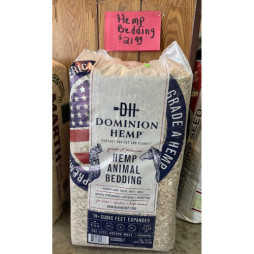{article.name}
Stay Informed
Springtime Livestock Care: Essential Tips for Healthy Animals

- Share this:
- Share on Facebook
- Pin on Pinterest
- Tweet on Twitter
Spring is an exciting time on the farm—pastures are greening up, newborn animals are arriving, and longer days bring more opportunities for outdoor grazing. However, the seasonal shift also presents challenges, from nutritional changes to parasite control and unpredictable weather. To ensure your livestock stay healthy and productive, follow these essential springtime care tips.
1. Evaluate and Refresh Nutrition Plans
With fresh pasture growth, many livestock transition from winter hay and grain to grazing. However, sudden dietary changes can lead to digestive issues like bloating or acidosis.
Key Tips:
- Gradually introduce animals to lush spring pastures to prevent bloating, especially in ruminants like cattle, sheep, and goats.
- Provide a balanced diet with adequate protein, fiber, and minerals to support healthy growth and milk production.
- Offer free-choice mineral supplements tailored to species-specific needs, including salt, calcium, and phosphorus.
- Monitor body condition scores to ensure animals are maintaining healthy weights.
2. Monitor and Prevent Parasites
Spring’s warmth and moisture create the perfect environment for internal and external parasites, such as worms, lice, ticks, and flies. Proper parasite management can prevent infestations that cause weight loss, illness, and reduced productivity.
Parasite Control Tips:
- Perform fecal egg counts before administering dewormers to avoid resistance issues.
- Use a strategic deworming schedule based on your livestock’s needs and veterinary recommendations.
- Rotate pastures to break parasite life cycles and prevent overgrazing.
- Implement fly control methods, such as fly traps, feed-through larvicides, and topical sprays for cattle, horses, and other livestock.
3. Ensure Proper Hydration
Warmer weather increases water consumption needs. Clean, fresh water is crucial for digestion, milk production, and overall health.
Watering Tips:
- Regularly clean and inspect water troughs to prevent algae and bacterial growth.
- Provide multiple water sources in pastures to prevent overcrowding and ensure easy access.
- Check automatic waterers for leaks or malfunctions.
- Offer electrolytes to young or stressed animals during temperature fluctuations.
4. Springtime Hoof & Foot Care
Mud and moisture in the spring can lead to hoof problems like thrush, foot rot, and lameness, especially in cattle, sheep, goats, and horses.
Hoof Care Tips:
- Trim hooves regularly to prevent overgrowth and cracking.
- Keep barn areas and feeding stations dry to minimize prolonged hoof exposure to mud and manure.
- Use foot baths for livestock prone to foot rot, especially sheep and dairy cattle.
- Check for signs of lameness early and treat any issues before they worsen.
5. Prepare for Calving, Kidding, & Lambing Season
Spring is a common birthing season for many livestock species. Proper preparation can ensure healthy deliveries and strong newborns.
Birthing Season Tips:
- Set up clean, dry, and well-bedded birthing areas.
- Keep a close eye on pregnant animals for signs of labor.
- Have essential supplies ready, including iodine for navels, milk replacer, and warming lamps if needed.
- Ensure newborns nurse quickly to receive colostrum, which is crucial for immunity.
6. Protect Livestock from Unpredictable Weather
Spring weather can be unpredictable, with sudden storms, temperature swings, and high winds. Proper shelter and protection are essential.
Weather Protection Tips:
- Provide windbreaks or shelter for animals in open pastures.
- Keep an eye on weather forecasts and bring vulnerable animals (such as newborns) inside during storms.
- Ensure proper ventilation in barns to reduce respiratory issues caused by damp conditions.
- Maintain dry bedding to prevent cold stress, especially for young animals.
7. Conduct a Spring Health Check-Up
A seasonal health check ensures your livestock start spring in top condition.
Health Check List:
- Schedule veterinary check-ups for vaccinations and deworming.
- Check for weight loss, overgrown hooves, or skin conditions.
- Inspect fencing and enclosures for damage from winter weather.
- Update record-keeping on breeding schedules, vaccinations, and parasite treatments.
Final Thoughts
Spring is a time of growth and renewal, making it essential to take proactive steps in livestock care. By managing nutrition, parasite control, hydration, hoof care, and weather challenges, you can set your animals up for a healthy and productive season. A little preparation now will ensure your herd or flock thrives throughout the warmer months!
Happy Spring Farming!
Special Offers



Comments